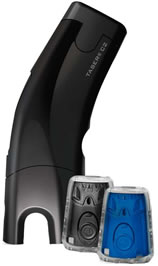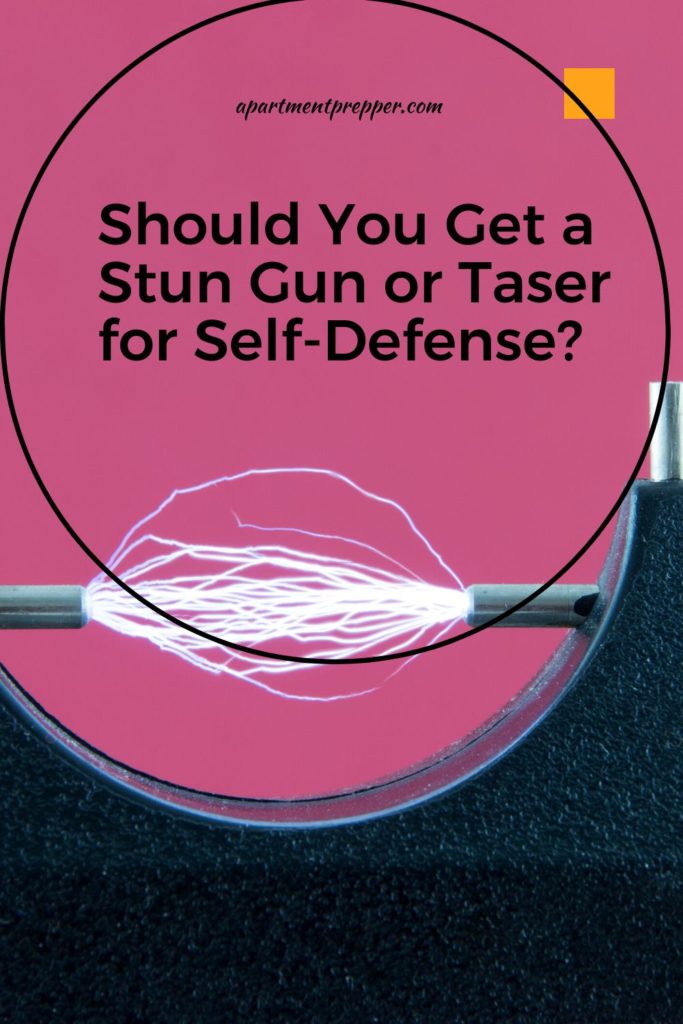Written by Bernie Carr
I was watching a popular vlogger the other day and she mentioned she was armed with a Taser as she went to explore an isolated area. When she displayed her weapon, I realized it was actually a stun gun that doubles as a flashlight. I thought this is a good topic to cover – the difference between a stun gun and taser, as they are frequently interchanged. We previously discussed using pepper spray for self-defense; today, we will delve into the realm of stun guns and tasers.
Stun Gun vs. Taser: Understanding the Differences
Initially, I too mistakenly assumed stun guns and tasers were the same, but in reality, they possess distinct characteristics:
Similarities:
A stun gun is a blanket term for devices that deliver an electric shock. Both stun guns and tasers are electronic devices designed to serve as personal defense tools. They share a compact size, making them portable enough to be carried in pockets or purses. Both devices rely on battery power as their energy source. Their primary objective is to incapacitate attackers, allowing the user to escape and seek assistance.
Differences:
Stun guns require direct contact between the attacker and the metal prongs of the device. Ideally, a brief half-second contact can startle the assailant and prompt them to release their grip, while a two- to three-second contact may induce muscle spasms and loss of balance. However, it is worth noting that certain types of stun guns might require up to four seconds of contact to achieve the desired effect. Four seconds can be a significant amount of time during an assault. Additionally, individuals under the influence of drugs or those with a high pain tolerance may exhibit resistance to the effects of a stun gun.
On the other hand, TASER is a trade name for a type of stun gun that operates by propelling two fish hook-like prongs towards the attacker, delivering electrical pulses through wires and into the individual’s body. This action disrupts the sensory and motor functions of the peripheral nervous system, resulting in incapacitation. Subsequently, the person may experience additional injuries upon falling or colliding with objects. Notably, the reaction to a taser is not contingent upon pain tolerance since the ensuing muscle contractions are involuntary. Furthermore, tasers used by law enforcement possess a longer range compared to commercially available ones.

In terms of pricing, stun guns are considerably more affordable, typically priced below $100, while tasers fall within the mid $300 range.
Layering Personal Defense Strategies
Prominent self-defense experts often advocate for a layered approach, combining various methods to enhance personal security. For instance, some individuals strategically place pepper spray in inconspicuous areas around their home for easy access (although this may not be suitable if children are present). Moreover, they carry a stun gun or taser as a portable personal defense tool before resorting to lethal force if necessary.
Legal Considerations
Before considering the purchase of a stun gun or Taser, it is crucial to familiarize oneself with the laws applicable in their respective state.
While stun guns and Tasers are legal in most states, some jurisdictions impose restrictions or outright prohibitions on their possession, carry, or usage. For example, as of this writing, stun guns and Tasers are illegal for regular citizens to carry in seven states: Hawaii, Massachusetts, Michigan, New Jersey, New York, Rhode Island and Wisconsin. They are also illegal in the District of Columbia. There may also be differing regulations in certain counties and cities so plan accordingly.
In Conclusion
To summarize, remember that all TASER devices are considered stun guns—but not all stun guns are Tasers. You need direct contact with the attacker when you use the stun gun, while the TASER can be used from a short distance. When it comes to personal defense, stun guns and tasers offer viable alternatives for individuals who choose not to carry firearms or lack concealed carry licenses. By understanding the distinctions between these electronic devices, potential users can make informed decisions about their self-defense options. However, you must stay abreast of local laws and regulations to ensure compliance with legal requirements. Whichever type of weapon you choose, remember you must have it with you at all times (where it’s allowed), and know how to use it.
Today’s societal climate not supportive of prepping. With your help, we can keep bringing you content that is often suppressed. Help keep Apartment Prepper alive.
Join me on Patreon for ad-free content.
Or Help out via Paypal
About the author
Bernie Carr is the founder of Apartment Prepper. She has written several books including the best-selling Prepper’s Pocket Guide, Jake and Miller’s Big Adventure, The Penny-Pinching Prepper and How to Prepare for Most Emergencies on a $50 a Month Budget. Bernie’s latest e-book, FRUGAL DIY has just been released on Amazon. Her work appears in sites such as the Allstate Blog and Clark.com, as well as print magazines such as Backwoods Survival Guide and Prepper Survival Guide. She has been featured in national publications such as Fox Business and Popular Mechanics. Learn more about Bernie here.
FB: https://www.facebook.com/apartmentprepper
Instagram: https://www.instagram.com/apartmentpreppers/
Twitter: https://twitter.com/AptPrepper
YouTube: https://www.youtube.com/channel/UC7vOtdbo-wiBeBxD6puCr1Q
Pinterest: https://www.pinterest.com/aptprepper/




